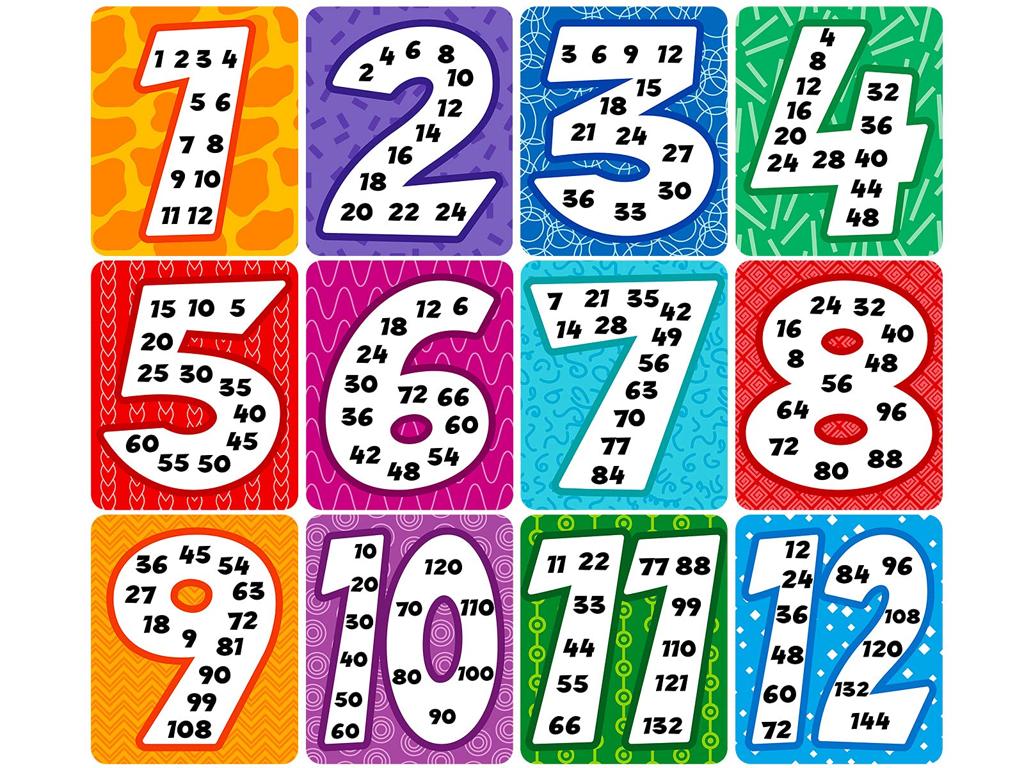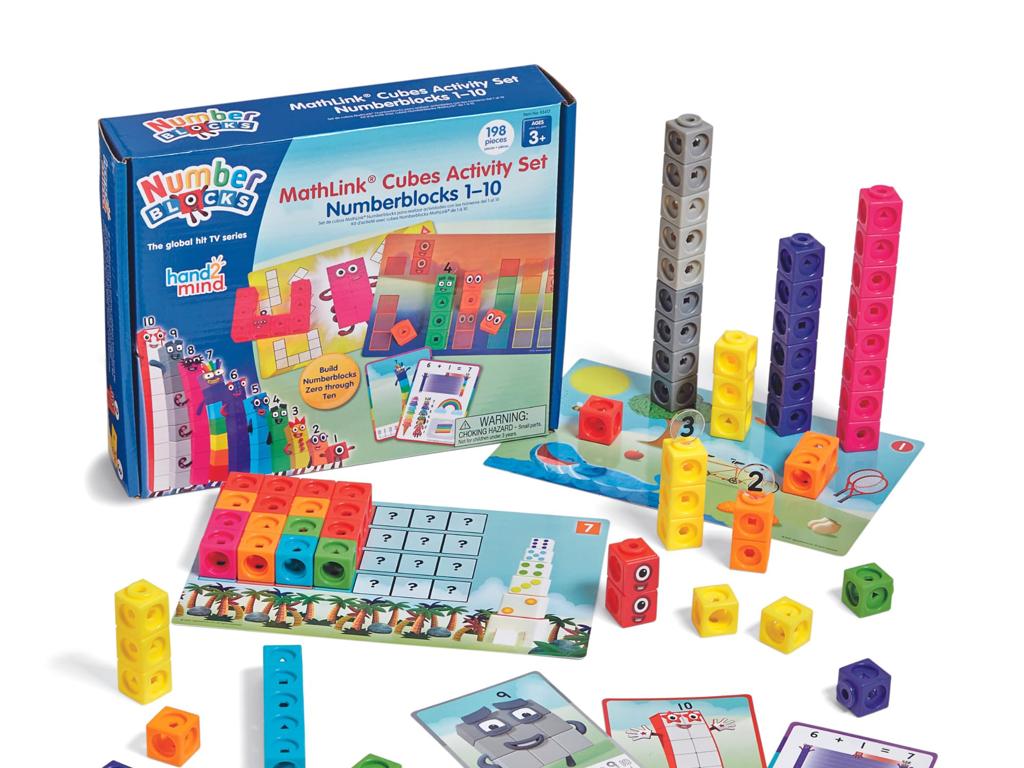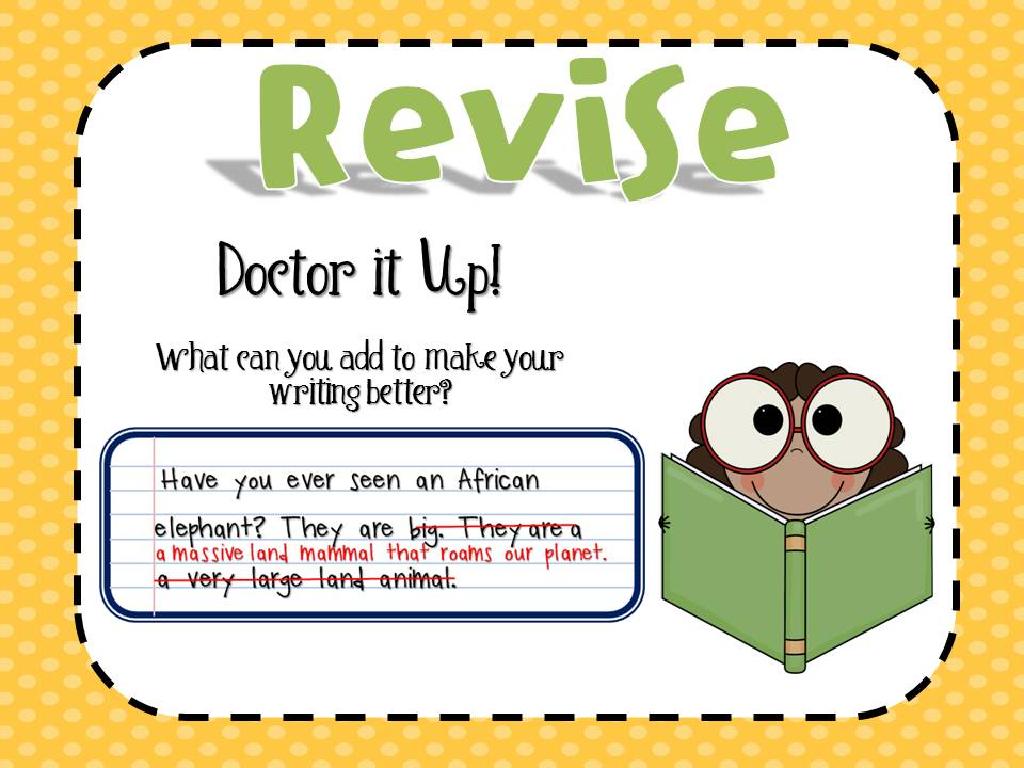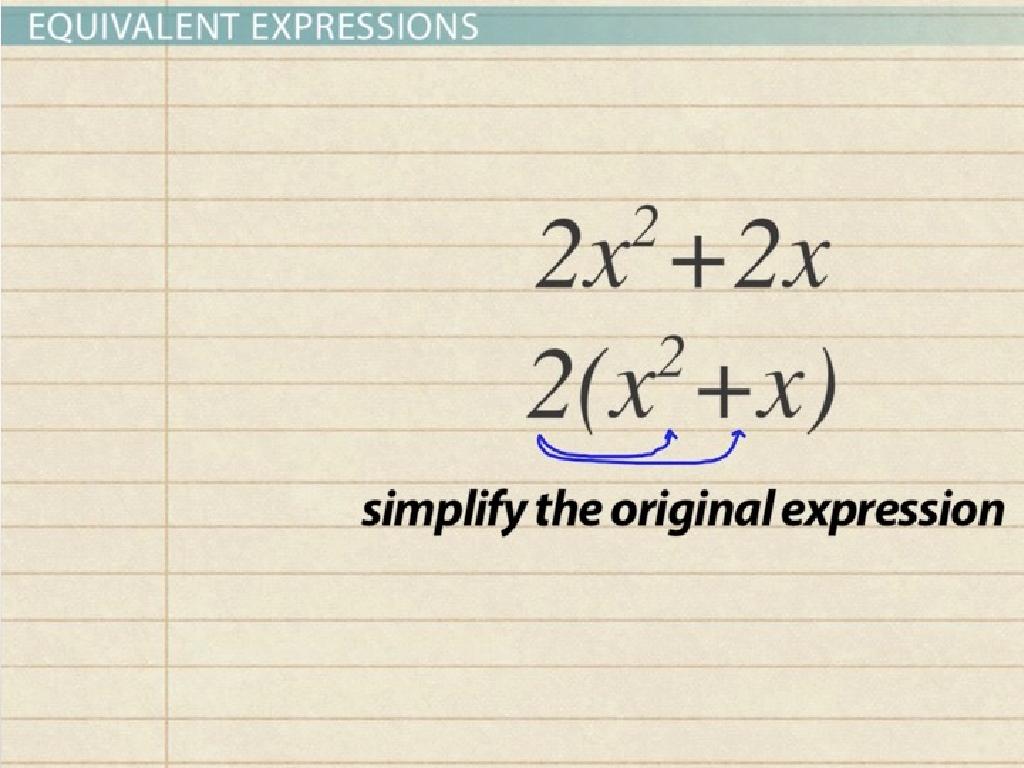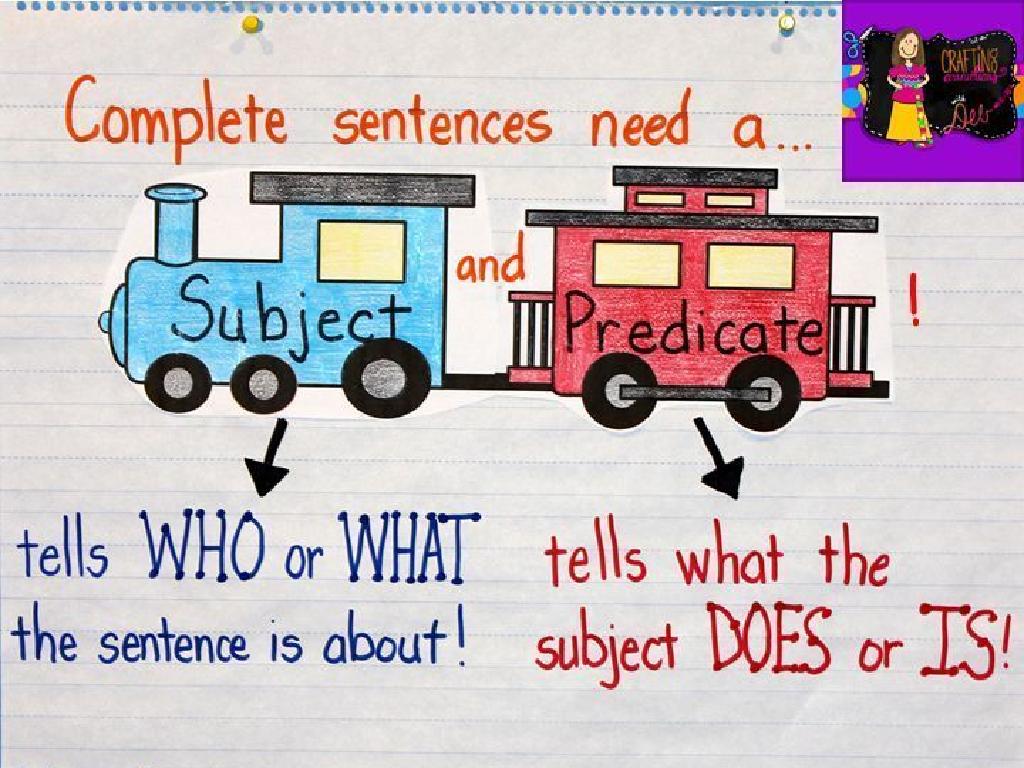Identify Sensory Details
Subject: Language arts
Grade: Sixth grade
Topic: Literary Devices
Please LOG IN to download the presentation. Access is available to registered users only.
View More Content
Exploring Sensory Details in Literature
– What are sensory details?
– Descriptions that appeal to our senses
– Bringing stories to life
– They create vivid imagery & enhance experience
– Importance in literature
– Engage readers, making scenes more immersive
– Examples in popular books
– ‘Harry Potter’: Smell of potions, sound of spells
|
This slide introduces the concept of sensory details and their significance in literature. Sensory details are the descriptive elements that an author uses to engage a reader’s senses (sight, sound, taste, touch, and smell), helping to paint a vivid picture of the setting, characters, and action. Discuss how sensory details enhance a reader’s experience by making the story more realistic and immersive. Provide examples from well-known books, such as the ‘Harry Potter’ series, where J.K. Rowling uses sensory details to bring the magical world to life. Encourage students to think of their favorite stories and the sensory descriptions that stood out to them. This will help them understand the power of sensory details in storytelling.
Exploring Sensory Details in Literature
– Define Sensory Details
– Descriptive words that appeal to our senses
– Connect to the Five Senses
– Sight, sound, smell, touch, taste
– Everyday Examples
– The sizzle of bacon, the warmth of sunlight
|
This slide introduces the concept of sensory details, which are words or phrases that describe how things look, sound, smell, feel, or taste. These details are crucial in creating vivid imagery in literature, allowing readers to fully immerse themselves in the text. Discuss how sensory details enhance a reader’s experience by appealing to their senses, making the story more engaging and relatable. Provide everyday examples, such as the sound of rain against the window or the smell of freshly baked cookies, to help students connect literary sensory details to their own experiences. Encourage students to think of their own examples and consider how sensory details can be used in their writing.
Exploring Sensory Details in Literature
– Identify sensory details in a story
– Find descriptive words that appeal to our senses in a familiar tale
– Discuss enhancement of the story
– How do these descriptions help us visualize and feel the story?
– Group reading activity
– Read a story together as a class
– Listen for sensory language
– Focus on words that describe sights, sounds, smells, tastes, and textures
|
This slide aims to help students recognize and appreciate the use of sensory details in literature. By examining a well-known story, students can identify descriptive words and phrases that appeal to the five senses. Discuss how these sensory details contribute to the richness of the story, making it more vivid and engaging for the reader. During the group reading, encourage students to actively listen for sensory language that paints a picture in their minds, enhances emotions, and brings the story to life. This exercise will improve their analytical skills and their ability to use sensory language in their own writing.
Your Five Senses in Descriptive Writing
– Exercise: Relate senses to classroom objects
– Identify objects and describe using the 5 senses
– Create a sensory word bank
– Compile words that describe taste, touch, sight, smell, and sound
– Using the word bank in writing
– Incorporate sensory words to enhance stories and descriptions
|
This slide introduces an exercise aimed at enhancing descriptive writing by utilizing the five senses. Students will look around the classroom and pick objects to describe using sensory language. They will then create a ‘sensory word bank’ with vocabulary related to taste, touch, sight, smell, and sound. The word bank will serve as a resource for students to draw from when writing, helping them to add vivid details and paint a clearer picture for the reader. Encourage students to think creatively and use their senses to explore the world around them. This activity will not only enrich their writing but also improve their observational skills.
Crafting Sentences with Sensory Details
– Turn bland sentences into vivid scenes
– Use the five senses to enhance descriptions
– Practice: Add sensory details to sentences
– For example, ‘The sun set’ becomes ‘The sun dipped below the horizon, painting the sky in hues of pink and orange.’
– Share your descriptive sentences
– Exchange sentences with classmates and listen to their creations
– Discuss the sensory impact in class
– Talk about how sensory details can change a reader’s experience
|
This slide is aimed at teaching students the importance of sensory details in writing. Start by explaining how sensory details can turn ordinary sentences into memorable, vivid descriptions. Encourage students to use their five senses to add depth to their writing. Provide practice by having them rewrite bland sentences to include these details. Then, create an interactive classroom environment where students can share and discuss their sentences, fostering a deeper understanding of the impact of sensory details on narrative and descriptive writing. This exercise will help students to not only recognize sensory details in literature but also to utilize them in their own writing to engage readers fully.
Incorporating Sensory Details in Stories
– Why use sensory details?
– They make stories vivid and immersive for the reader.
– Tips for sensory details
– Use the 5 senses to describe scenes and actions.
– Class activity: writing with senses
– Write a paragraph describing a place using all 5 senses.
– Engage readers’ senses
– Sensory details create a rich experience.
|
Sensory details are crucial for creating a vivid picture in the reader’s mind, making the story more engaging and memorable. Encourage students to think about how each sense can be involved in a scene. For example, the sound of rain against a window, the smell of wet earth, the sight of droplets on leaves, the taste of fresh water, and the touch of damp air. During the class activity, students should write a short paragraph about a place or event using sensory details. This exercise will help them practice showing rather than telling in their writing. Provide feedback on their use of sensory language to enhance their descriptive writing skills.
Class Activity: Sensory Detail Scavenger Hunt
– Understand the scavenger hunt rules
– Work in groups on text examples
– Identify examples of sensory details
– Look for words that describe sights, sounds, smells, tastes, and textures
– Present your findings to the class
|
This activity is designed to help students identify sensory details in literature, which are words that describe how we sense the world: sight, sound, smell, taste, and touch. Divide the class into small groups and provide them with various texts. Each group’s task is to find and note examples of sensory details. Encourage them to consider how these details contribute to the imagery and mood of the text. After the activity, each group will present their findings, discussing the impact of the sensory details on the reader’s experience. For the teacher: Prepare diverse texts with rich descriptions, guide the students on how to work collaboratively, and facilitate the presentations ensuring each group gets feedback.
Wrapping Up: Sensory Details
– Recap: What are sensory details?
– Sensory details involve our five senses to paint vivid pictures in writing.
– Why sensory details matter
– They enrich narratives, making experiences more relatable.
– Homework: Descriptive paragraph
– Write about your favorite place using sight, sound, smell, touch, and taste.
– Share your work next class
|
As we conclude, remind students that sensory details are used to evoke the five senses and create rich imagery in the reader’s mind. Emphasize the importance of sensory details in making stories come alive. For homework, students should write a paragraph about a place they love, using sensory details to describe it fully. Encourage them to think about how each sense can be involved in their description. In the next class, students will have the opportunity to share their paragraphs, which will help them practice their descriptive writing and public speaking skills. Provide examples if necessary, and encourage creativity and the use of vivid language.

